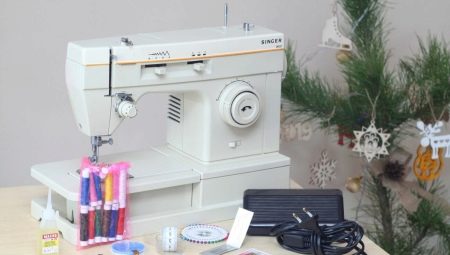For a long time, the sewing machine was almost a luxury item - good branded models were expensive and inaccessible for purchase. Today, the assortment of products in this category is so large that even experienced craftswomen are ready to get confused. Before choosing a sewing machine, you have to look through hundreds of options, and such an assortment only complicates the decision. Reviews of products from this category also do not bring final clarity - what suits an experienced seamstress may be too complicated or inconvenient for a beginner.
Choosing a home use machine for all types of fabrics always starts with deciding on the right budget. The best companies - Singer, Janome, Brother, Minerva - produce high-quality products, but are ready to offer quite budget solutions for beginner seamstresses. But there are quite a few other cheap, affordable and fairly functional sewing machines on the market. What to be guided by when choosing a technique and at what points to pay close attention to? It is worthwhile to understand this in more detail.

Species, their pros and cons
All sewing equipment presented today for sale, which a consumer can choose for himself, has different levels of complexity and controls. The simplest models are designed for rare applications - clothing repair, hemming curtains, bending trousers. More complex options allow embroidery, patchwork, sewing zippers, decorating textiles with decorative materials and much more.
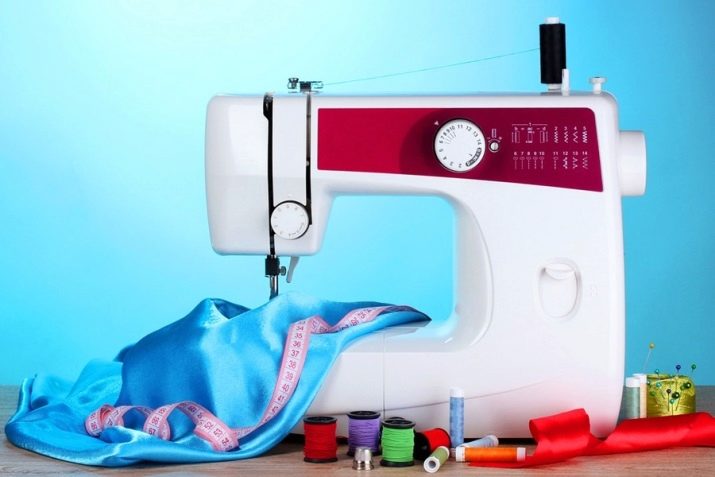
Electromechanical
These are the simplest models equipped with an electric motor and pedal to change the sewing speed mode.The production of machines of this type was established in Soviet times. Today, most of the budget technology with electric drive is made in Taiwan, in China - almost all famous brands order production of their equipment here. For sewing machines of this type, the parameters — length and width of the stitch, the type of stitch — are adjusted manually, the control panel is located on the side closest to the operator.
It is believed that electromechanical models are intended for domestic use. The set of functions in sewing machines is limited to 5-25 operations, usually all the basic stitches, overcast seams are available.
Decorative options for stitches are not provided, which makes this format of technology uninteresting for professional seamstresses and experienced needlewomen.
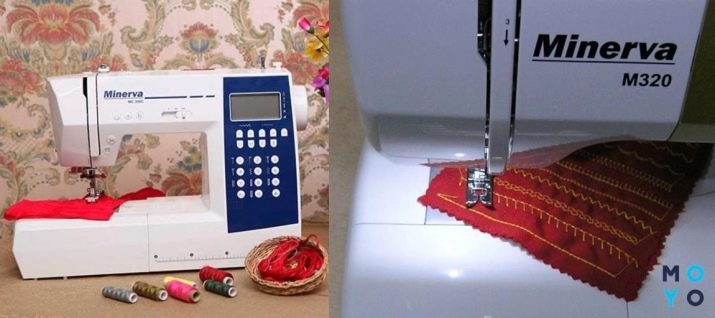
Pros of electromechanical machines:
- affordable cost;
- the possibility of self-tuning and repair;
- the presence of the necessary basic functions.
Minuses:
- limited choice of operations;
- outdated technical equipment;
- lack of opportunities for decorative sewing.
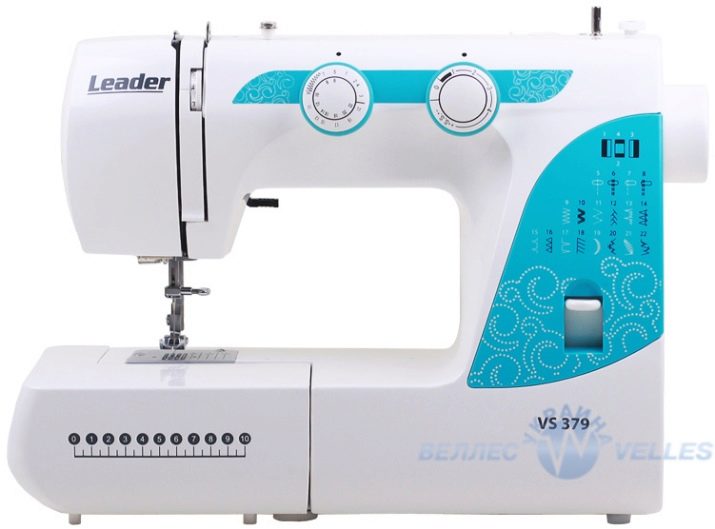
Electronic
A more modern version, able to sew without a pedal, using a push-button speed controller. In addition to mechanical components, digital technologies are also used here. Built-in information display, electronic program control, memory cells for saving user settings - all this makes the work much more convenient. To select the type, length, width of stitches, you no longer need to rotate the knob - everything is set in 1 touch.
Electronic sewing machines - technology that meets all the requirements of our time. They are noticeably easier to learn, allow even a beginner to understand the implementation of lines of varying complexity.
The number of available operations thanks to the built-in digital unit increases to several tens, you can use the technique to create different decorative stitches.

Advantages of electronic machines:
- suitable for heavy duty sewing;
- wide range of operations;
- ease of development;
- Ease of Management;
- the ability to customize the technique as you wish.
Minuses:
- high sensitivity to fabric texture;
- standard power;
- focus on working with thin and medium materials;
- high price;
- work only from electricity;
- unsuitability for home repair.
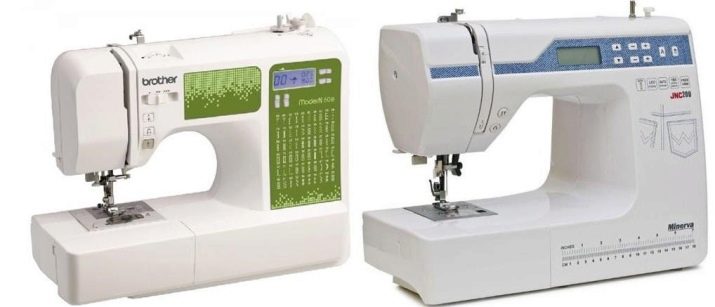
Computer controlled
Computer Controlled Models - it is a technique with great functionality and working potential, capable of performing up to 500 or more operations. The firmware is easily updated when connected to the user's personal computer, you can expand the software capabilities, download patterns for embroidery and needlework. These machines have a large margin of safety, are well suited for the industrial production of fabrics. Modern computer-controlled sewing machines today are chosen only by very experienced seamstresses who are constantly engaged in work at home or keen on needlework.
Quilting, patchwork, embroidery and the creation of original ornaments, various ways of stitching loops, hundreds of decorative stitches - with such equipment you can carry out bold and creative creative plans, but for a beginning seamstress, an excess of functions will only be a hindrance.
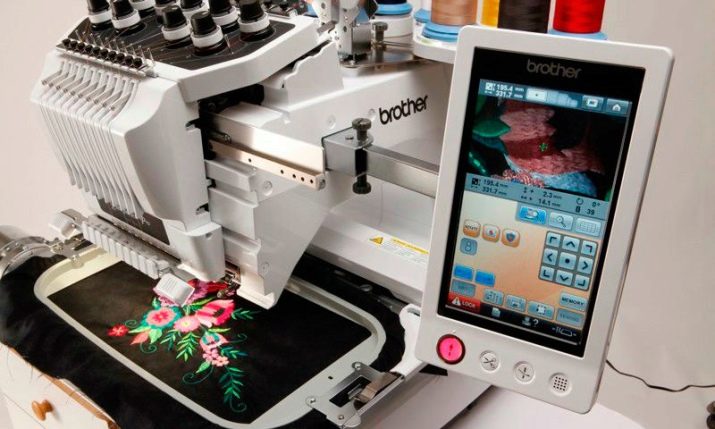
Advantages of machines with a microprocessor:
- unlimited choice of operations;
- high speed needle;
- optimum power and high performance;
- compliance with modern standards;
- full automation of production processes;
- the possibility of use in the professional field.
Minuses:
- very high cost;
- complex settings;
- possible problems with the service.

Selection options
When choosing a sewing machine for the home is very it is important to prioritize correctly. A household model may not support sewing in 2 needles; for it, it is more important that it has 3 basic lines in a complete set: in a straight, zigzag, obtuchny for loops.This is already enough to produce the necessary minimum operations. To perform complex work, it will be correct to consider models with advanced functionality that can grind the edge of the product, simulate an overlock seam or bend the edge.
The less experience the operator has, the simpler the machine design should be. Do not immediately choose models for skin or thick matter. The most common options for silk, chintz, calico, linen, flax fit perfectly and allow you to make quick progress in sewing.
The type of machine also matters, but when choosing between electromechanical and electronic models, it’s better not to chase the fashion, but focus on your own comfort, including the sewing speed.
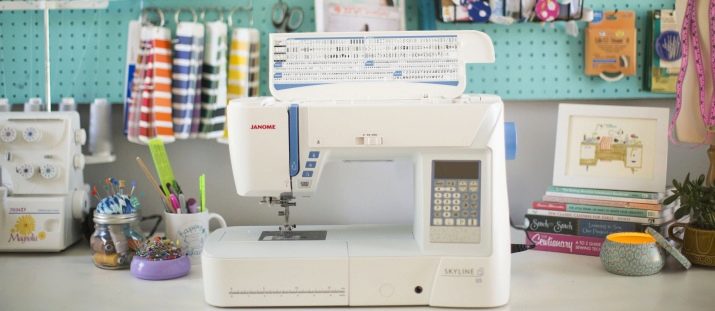
Equipment
A wide set provides the convenience of the seamstress. For example, additional legs allow you to perform complex and decorative operations. In total, there are more than 20 varieties of clamping devices that can facilitate the sewing of zippers, overcasting edges, and stitching decor. In addition, the kit should include needles, spools and other replaceable items.
Among the options useful in sewing are sleeve platform hidden in the main frame. It will help ensure convenience when hemming the bottom of trousers, stitching the sleeves of shirts, cuffs. If you have to sew large-format things, it is better to give preference to models that come with a side table. It increases the area of a standard sewing platform.
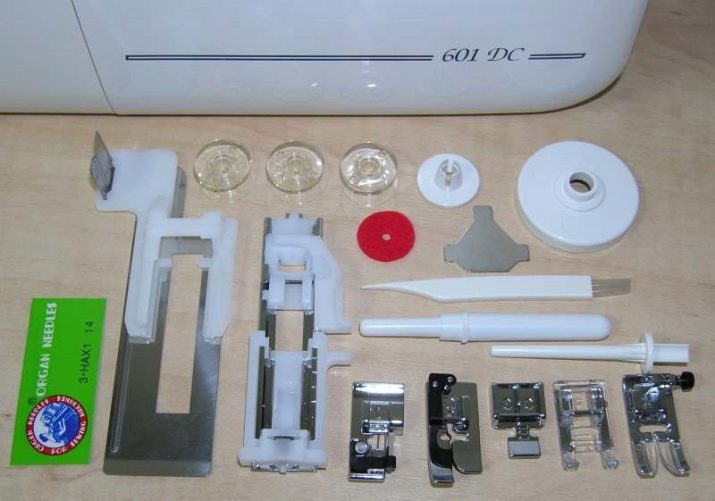
The presence of a disconnectable fabric conveyor in the kit makes it more convenient to work with different types of slippery materials. In this case, the fabric will not slip. An automatic needle threader will greatly simplify the process of getting into the needle and make it easy to start sewing without wasting time. Among the useful additional components can be noted a cover, a compartment for storing scraps of fabric, tools for cleaning and caring for the machine.
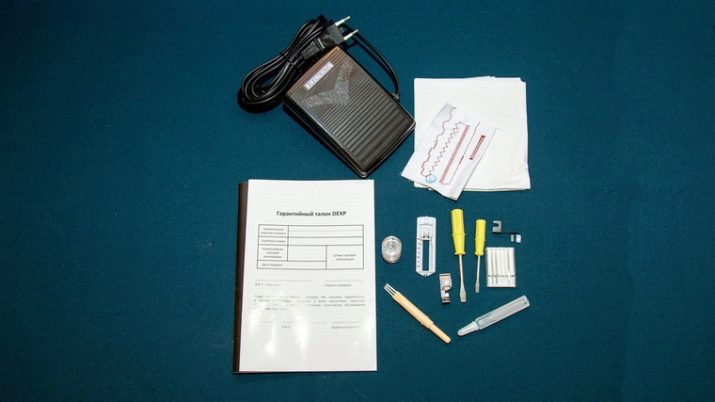
Types of Stitches
Among the available types of stitches for a home sewing machine, the most important is a straight seam. It is used to grind parts. A zigzag stitch is used to overcast the edges of the fabric and acts as the basis for most decorative seams. Loop processing should also be included in the list of basic operations.
Other hemming, overcasting, elastic stitches needed to expand the functionality of the machine will be useful.
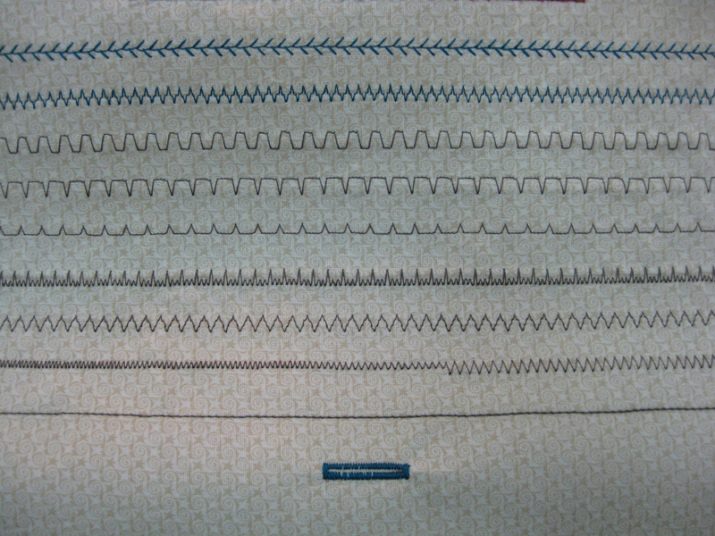
If you plan to sew clothes, it is better to give preference to a technique capable of providing auto-throwing loops. In this case, all the slots will be processed equally accurately and efficiently. In low-cost machines, this function is mainly performed in the semiautomatic mode under operator control. A set of decorative stitches in electromechanical technology is not of particular interest.
In machines with a microprocessor, additional seams can be presented in the form of hundreds of line options. Among them - ornaments, scallop hemming edge, satin flooring, cross, hemstitch, alphabet. In many machines, you can embroider Latin, Russian letters, hieroglyphs.
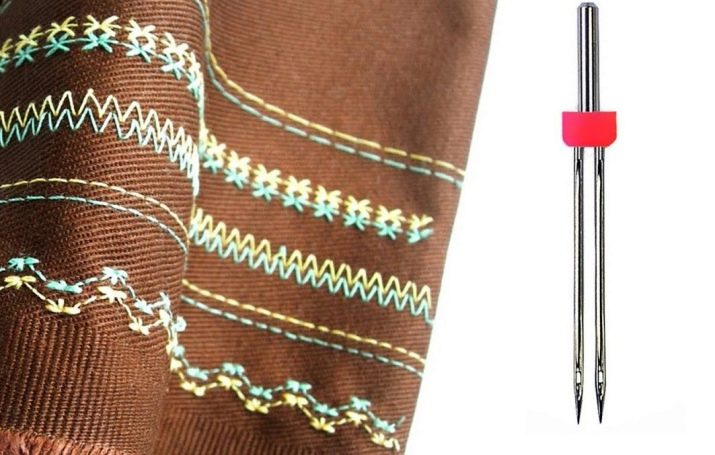
Appointment
By their purpose, all non-professional sewing machines are divided into several types.
- Basic. The simplest basic models with a minimum set of functions are designed for home use. They usually have a needle speed of 600-800 st./min., Designed to grind the material in a straight line, grind the edges with a zigzag. Not intended for sewing thick, coarse materials.

- Universal. They are suitable for all fabrics - from thick drape to light chiffon. The most powerful machines are functionally best equipped. In this case, you can successfully work on both electronic and electromechanical equipment.
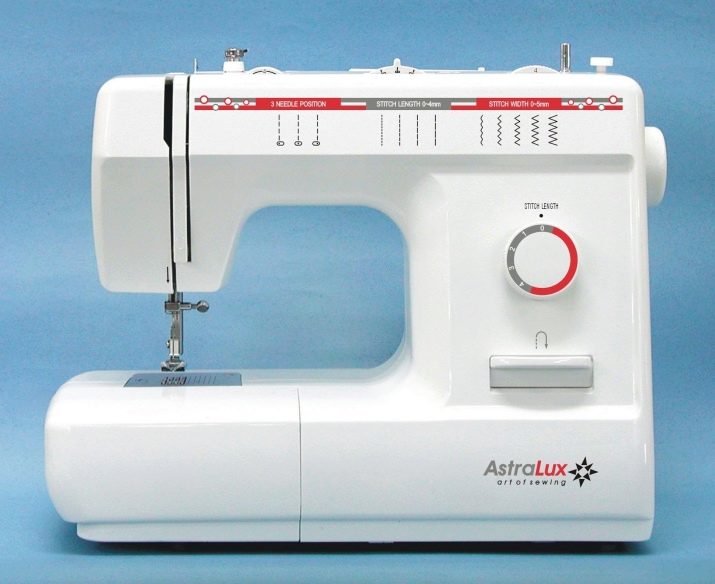
- Special These are sewing machines for performing certain operations. Most often they are used in a professional environment, where each stage of the technological process is carried out on their own equipment.This can be a machine for sewing leather or suede, overcasting the edges of the fabric, forming a knitted flat seam. Special machines include buttonhole loops, flat button fasteners, short-stitch machines for fastening accessories.
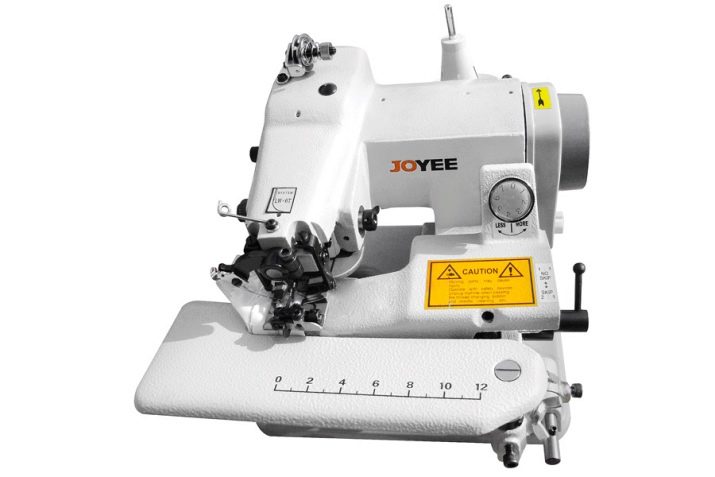
- For scrapbooking. For these purposes, it is recommended to select machines with a vertical type of shuttle mechanism and a significant breakdown force of the needle. It is important that the effort is sufficient for flashing cardboard. Mostly masters praise models Janome with embroidery function. Here, even a horizontal shuttle withstands high loads.
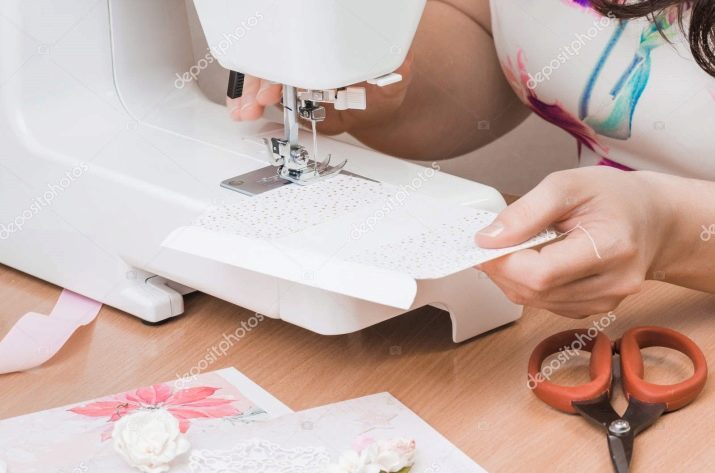
- For patchwork and quilting. Here in the car, the largest possible platform area, the presence of an additional side table, and an upper conveyor for connecting a large number of rags of material are important. In addition, it is important that the model supports sewing speed adjustment, changing the length and width of stitches with a large range. The knee lever for raising the foot is also convenient in operation, and the needle threader facilitates the work with threads of different colors.

- For embroidery. Both specialized and universal models of sewing machines are used here. Embroidery technique is focused only on work with applique, creating patterns. Sewing and embroidery can additionally carry out traditional operations - to form a line in a straight line, zigzag. All of these models have computer, programmable control and a wide range of available operations.
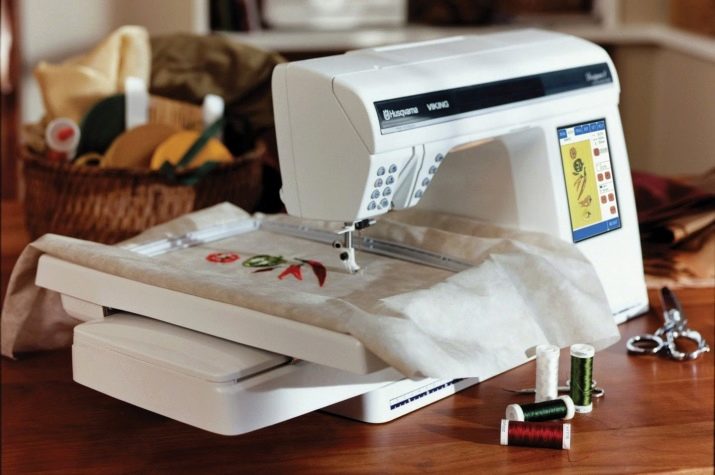
All of these types of sewing machines are suitable for home use. It is enough to correctly determine the purpose of their acquisition.
additional characteristics
And a few more important nuances should be considered when choosing.
Shuttle Type
Among the additional characteristics of the sewing machine, the type of shuttle can be called the most important. In low-cost electromechanical models, it is vertical, swinging. This type has many disadvantages, making it unsuitable for professional use. It creates vibration during operation, does not provide a sufficient speed of the needle, limits the length and width of the stitch to a range of 5 mm.
The quality of the stitch in machines with a vertical swing shuttle is the lowest.
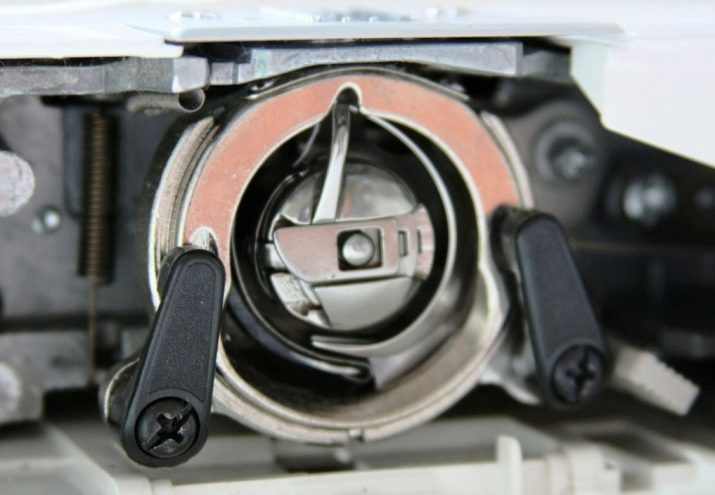
More advanced mechanisms have a horizontal arrangement and a rotating structure. Such shuttles are used in sewing machines of the middle price category, they are distinguished by the convenience of refueling the bobbin, ease of control over the amount of the remaining bobbin thread. The equipment vibrates less due to the replacement of vibrational effects by rotational ones. Horizontal shuttles very rarely confuse the bobbin thread, do not require lubrication. The disadvantages include difficulties in adjusting the lower thread - changing its tension on its own is quite difficult.
In sewing machines of a premium class fundamentally different mechanisms are installed. The vertical double-shuttle shuttle almost does not vibrate, most often found in high-end industrial models of technology. It provides convenient adjustment of the thread tension, but the mechanism requires periodic lubrication.
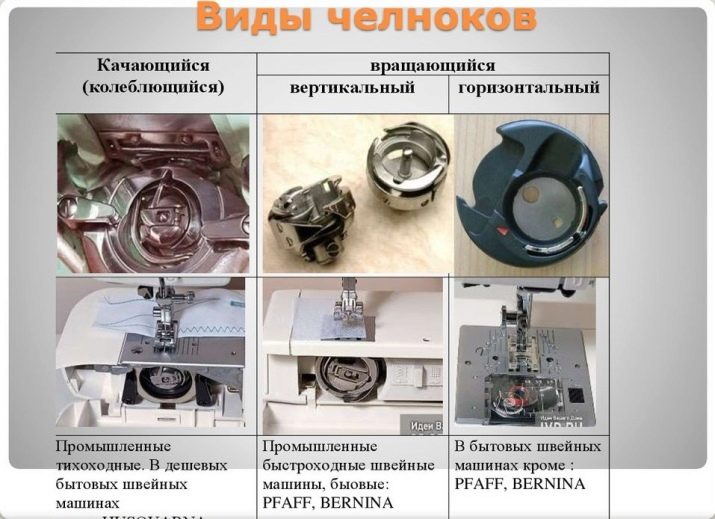
Stitch Options
Equally important are the length and width of the stitch. In electromechanical models, these figures are limited to a range of 3-5 mm. More upscale options may show a stitch length of 6-9 mm. In general, the higher this indicator, the thicker, denser fabrics can be sewn.
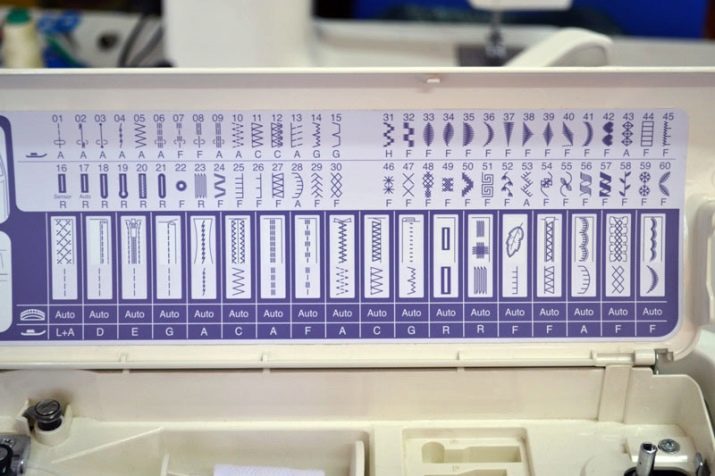
Foot lift
This indicator matters if you plan to work with multilayer materials or products of large thickness. In expensive models of sewing machines there is double lift option, significantly increasing the clearance. Normally, this indicator rarely exceeds 11-12 mm.
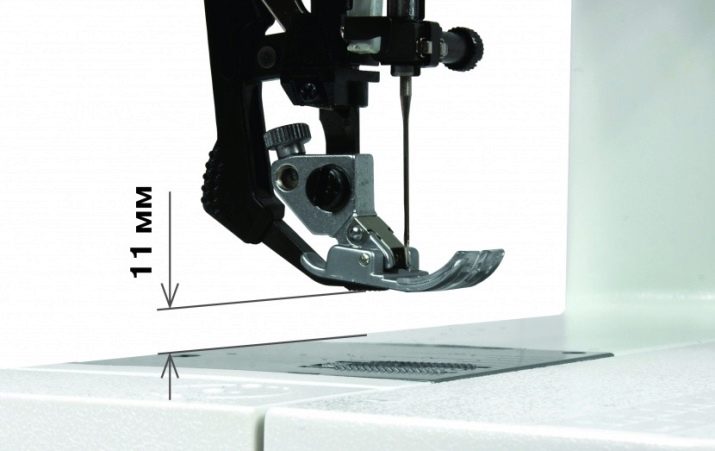
Material pressure adjustment
If the sewing machine is equipped with a top conveyor, this function is not so important. But most household models do not have such an addition and require additional control.To do this, the presser foot pressure regulator is provided in the apparatus design to determine the optimal pressure force for any type of matter - from the lightest to thickest fabrics. This function is especially important when sewing knitwear, where the weakening of the pressure makes it possible to avoid edge stretching.
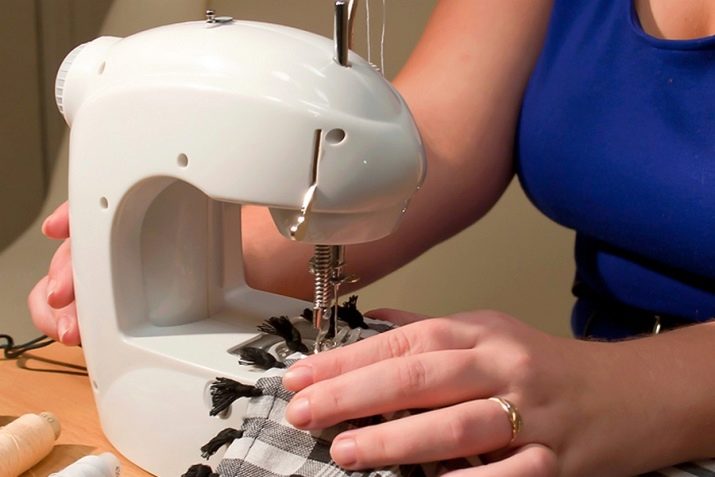
Which company is better?
Consider which manufacturers of sewing machines receive the most praise from lovers and professionals of sewing. Among the brands that rightfully occupy the status of leaders, several names can be noted.
- Pfaff. German company specializing in the production of computerized models. The company has been operating for over 150 years, demonstrating stability, based on European quality standards. Despite the fact that Germany was designated as the place of manufacture, production in 2006 was completely transferred to China. The brand is also famous for machines for narrow specialization - embroidery, figured sewing, decorative trim.
- Janome. One of the most famous companies in the middle price segment. Japanese company, equipment manufactured in Taiwan. The lineup is represented by household electromechanical, electronic and computer machines. In addition, Janome equipment is suitable for scrapbooking, with sufficient strength and reliability.
- Brother. Japanese corporation with a wide network of dealers worldwide. Cars of the brand are sold in dozens of countries, in the presence of models with different functional equipment. Japanese-made models are considered to be of the highest quality, but in Russia products of the local representative office of a company with a lower assembly level or Chinese versions are mainly sold. When choosing a car, you should be careful.
- Bernina. The Swiss brand that manufactures equipment in the economy class and the middle price segment of the market is in Asian countries, and high-end professional-class machines in Europe. This division of labor allows the company to achieve the necessary results, while maintaining the status of a reliable supplier. The most expensive models are tested manually. Low-cost equipment also has good build quality and is characterized by the reliability of parts.
- Singer. American brand with German roots. The sewing machines of the company are also produced in Asian countries and are presented in the widest range of functionality. There are electromechanical, electronic, computer models with a different set of options, suitable for performing the most ambitious tasks.
- Husqvarna. The Swedish company provides reliable household sewing machines. They are well adapted to work in difficult conditions, are not afraid of high loads. This is a good solution for an experienced seamstress, for beginners, the functional equipment of the equipment will seem too complicated.
- Juki. Japanese brand of high-end sewing machines for professional or home use. These are universal models for all types of fabrics, demonstrating high sewing speed. The equipment of this manufacturer will suit an experienced seamstress who wants to have at her disposal a reliable, durable machine for continuous operation.
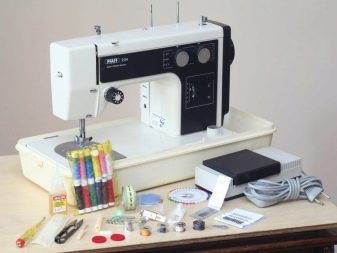
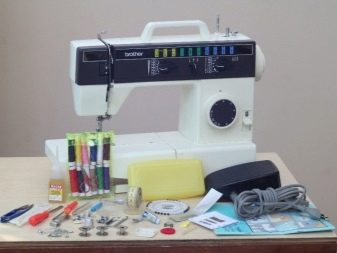
Tailors tips
According to experts, many beginning seamstresses make annoying mistakes when choosing sewing machines for home use. And the main one is focusing exclusively on cost. Of course, well-known brands make a mark-up for the "name". But it is very important to remember that in sewing machines the main value is reliability, functionality and durability of equipment.
Do not look at country of production. A Chinese car from a little-known manufacturer can hardly guarantee good results, but an ultra-expensive brand model from the USA will be useless if the seamstress's capabilities are limited to a zigzag seam and straight lines. However, Today, 99% of the machines on the market are made in Asia.
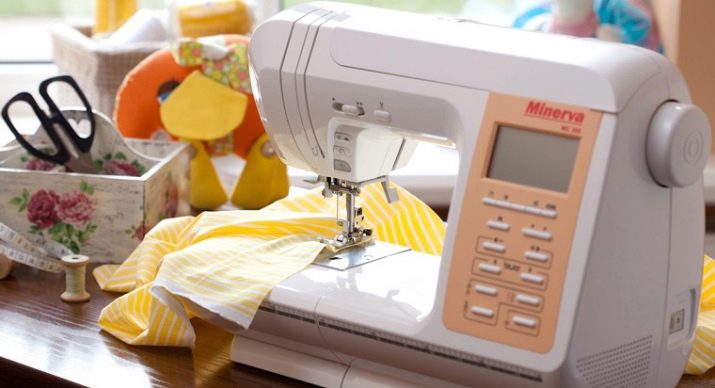
A typical American brand Singer for many years orders equipment in Taiwan.Europeans are not far behind her - Brother, Bernina create their models at the same factory. The Japanese also order branded solutions in China or Taiwan. Therefore, choosing "European" or "American" cars, it is possible with a high degree of probability to get a solid, well-assembled version of Chinese-origin machinery.
There are no machines that “sew poorly” - there are inexperienced seamstresses. The quality of the stitch is controlled by the precise selection of parameters. If the seamstress lacks experience, even the most high-quality and reliable technology will loop, tear the thread and pull the material together.
Multifunctional cars look very attractive, and if the budget allows, beginning seamstresses are tempted to buy them. At first, this consideration really seems true. In practice, having an overly large set of options can simply confuse the beginning seamstress.
It would be wiser to first purchase a simpler option, and if necessary replace it or purchase additional equipment for edge trimming or embroidery.
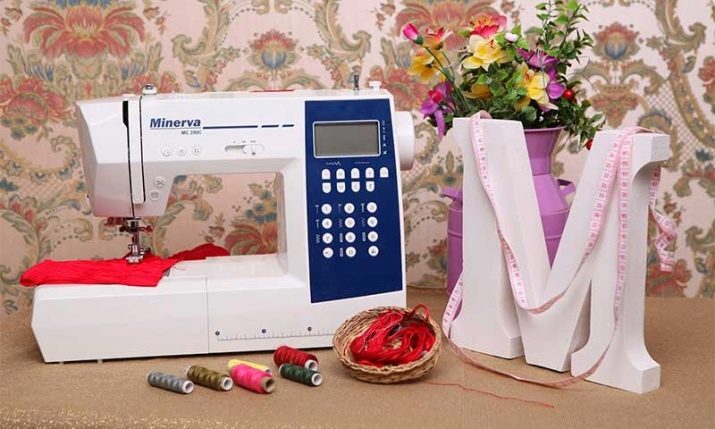
No need to overpay for extra options. If the thread cutter, reverse sewing, needle threader are useful devices, then the program for repeating elements or mirroring stitches will be needed only for lovers of embroidery. In an ordinary household machine, they simply are not needed.
Even if the car looks attractive and fits into the purchase budget, you should not rush. First you need to make sure that its possible repair, maintenance will not become a problem. For some machine models, even acquiring paws or needles will be difficult, especially in remote regions. Exclusive repair equipment may require costs comparable to buying a similar new device.
See how to choose a sewing machine in the next video.
